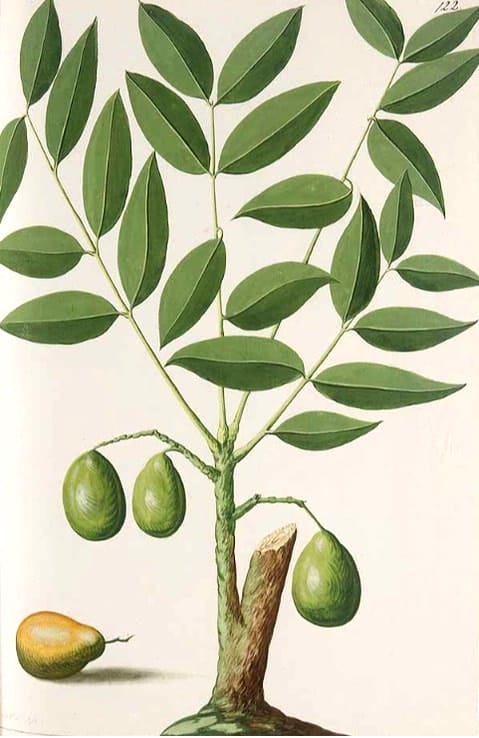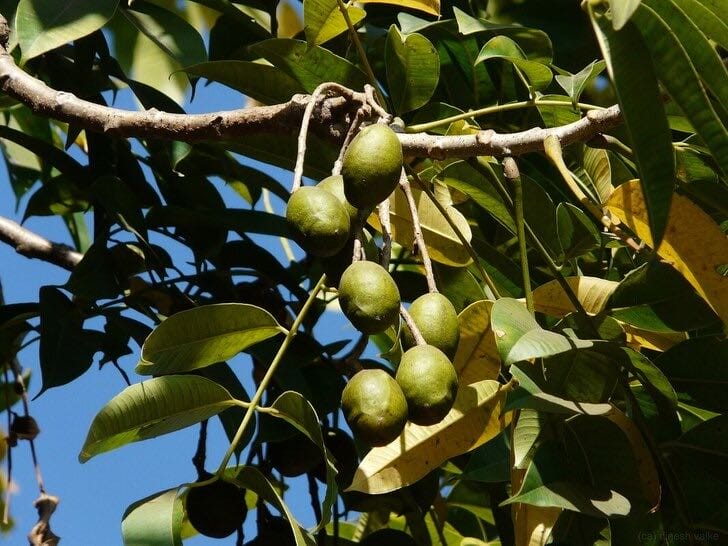Spondias pinnata, Amrata
Hog Plum, Wild MangoAmrata (Bark); Amrataka (Fruit) (Ayurveda)
Mambulichi (Siddha)
 Spondias pinnata
Spondias pinnataN. Witsen, H. de Jager, Plantae Javanicae pictae, ex Java transmissae anno MDCC (1700)
 Spondias pinnata fruit
Spondias pinnata fruit(Photo by Dinesh Valke) (Wikimedia)
Botanical name:
Spondias pinnata (syn. S. mangifera, S. acuminata)
A ‘Greater’ variety is derived from S. cytherea
Parts used:
Principally the Stem-bark
Also Fruit, Gum and Leaf
Temperature & Taste:
Cool, dry. Sour, Sweet, Astringent
Classification:
4c. CARDIAC
Uses:
1. Clears Heat and Damp, Stops Leakage:
-diarrhea, dysentery (with or without Blood)
-Gonorrhea, Leukorrhea
2. Clears Liver Heat:
-hoarse or sore throat
-Indigestion from Bile
-Burning syndrome; Bile diseases
-Hepato-protective
3. Clears Deficient Heat:
-Consumption, Wasting
-Hypoglycemic effects
4. Benefits the Heart:
-Heart tonic
-it is included in the group of drugs that promote cheerfulness in Ayurveda
5. Externally:
-topically for Earache
-Wounds from poison arrows
-leaf paste is applied to rheumatism
UNRIPE WILD MANGO FRUIT:
-treats Vata (Wind) diseases, neuralgia, rheumatism etc.
-relieves indigestion, moves the bowels
RIPE WILD MANGO FRUIT:
-cooling, sweet, nourishing and strengthening
-Balances Vata (Wind) and Pitta (Bile)
Dose:
The bark and gum have similar uses, the gum is more demulcent.
Decoction: Stem-bark: 5–10 grams
Powder: 1–3 grams
Fruit Juice: 10–15mls.
Comment:
1. The tree and its properties are similar to Mango. It was previously classified as Mangifera spp.
2. The Fruit pulp is stomachic, acid and astringent. Used for Indigestion, similarly to Mango.
Main Combinations:
1. Dysentery, Spondias pinnata bark with Mango bark
Major Formulas:
Cautions:
None noted
